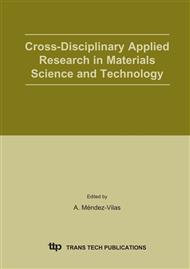p.483
p.489
p.495
p.501
p.507
p.513
p.519
p.525
p.531
The Analysis of Space Charge Behavior in Nylon 11
Abstract:
A combined isothermal and non-isothermal measurement technique is described for analyzing space charge behavior in dielectric materials. The experimental conditions are chosen so that the dipolar effects are insignificant and the measured current is mainly due to space charge detrapping. For polyamide 11 four peaks have been identified above the poling temperature. As the difference between the peak temperature and the poling temperature increases, the apparent activation energies decrease suggesting that only the faster modes participate to the charging process. The charge associated to the apparent peak and the peak at 96 °C scales linearly with the polarization field. The injected space charge at 35 °C is very stable at 150 °C, an important fact with respect to technological applications of polyamide 11 as an electroactive material.
Info:
Periodical:
Pages:
507-512
Citation:
Online since:
March 2005
Authors:
Price:
Сopyright:
© 2005 Trans Tech Publications Ltd. All Rights Reserved
Share:
Citation:


